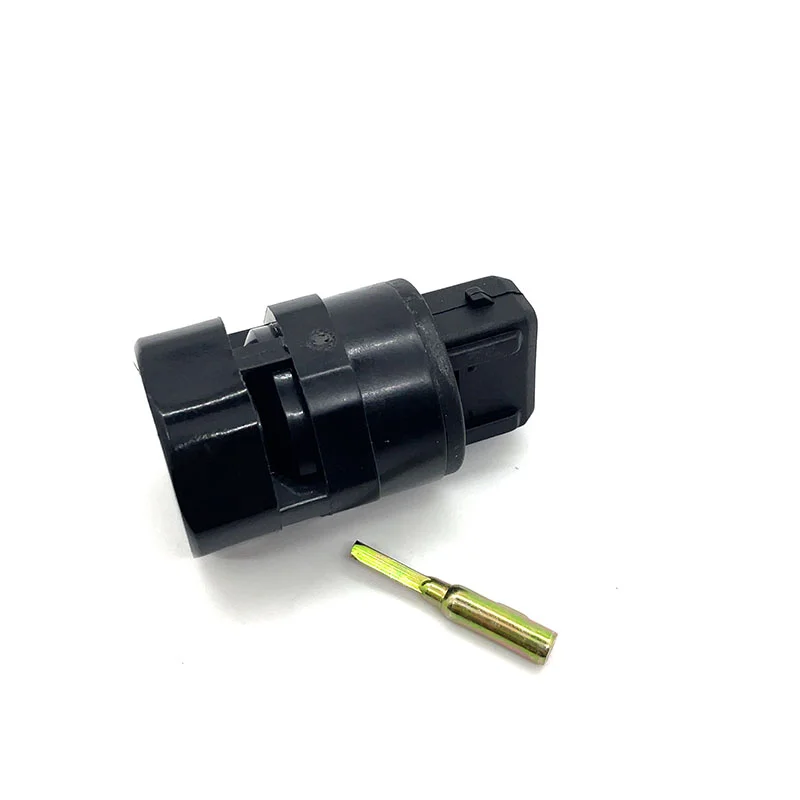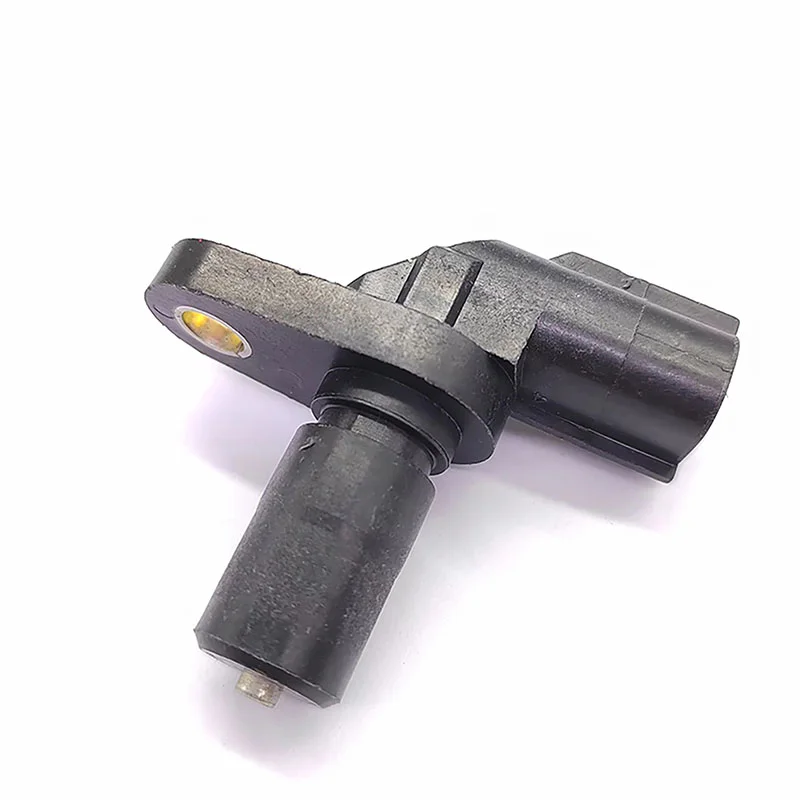A transmission output speed sensor plays a crucial role in ensuring smooth driving and optimal vehicle performance. This small but essential component monitors the rotational speed of your car’s transmission output shaft and sends accurate data to the vehicle’s engine control unit (ECU). Without a properly functioning sensor, your vehicle may experience rough shifting, delayed gear engagement, or even erratic speedometer readings.
Many drivers overlook the importance of this sensor until a noticeable problem arises. In most modern vehicles, the transmission output speed sensor works alongside other components like the transmission input speed sensor and the transmission vehicle speed sensor to maintain precise gear timing and fuel efficiency. A failure in any of these sensors can lead to driving discomfort, reduced performance, and potentially costly repairs.
Understanding the early warning signs of a failing sensor allows car owners to act before minor issues escalate. In this article, we will explore five common symptoms of a bad transmission output speed sensor, helping you identify problems early and protect your vehicle’s transmission system. Whether you are a daily commuter or a car enthusiast, recognizing these signs is essential for maintaining a smooth and safe driving experience.
If you notice unusual behavior in your transmission or inconsistent speed readings, it may be time to inspect the auto transmission sensor or related components. Acting promptly can prevent further damage and keep your vehicle performing at its best.

What Is a Transmission Output Speed Sensor?
A transmission output speed sensor is a small electronic device that measures how fast the transmission’s output shaft is spinning and converts that motion into an electrical signal for the vehicle’s control systems. In simple terms, the transmission output speed sensor tells the transmission control module (TCM) and engine control unit (ECU) the actual speed coming out of the gearbox. This information helps the car choose the right gear and maintain smooth driving.
There are two common sensor technologies: inductive (magnetic) sensors, which generate an AC signal as gear teeth pass by, and Hall-effect sensors, which produce digital pulses. Both provide the TCM with a pulse train whose frequency corresponds to rotational speed. The TCM compares this data with inputs from other systems — including the transmission input speed sensor — to determine shift timing, gear ratios, and when to enable cruise control or ABS adjustments. A malfunctioning transmission output speed sensor can disrupt this balance, leading to rough shifts or performance issues.
The sensor’s location varies by vehicle. Some cars mount the transmission output speed sensor on the transmission housing near the output flange, while others place it at the differential or inside the transmission case. Being close to heat, fluid, and moving parts makes it vulnerable to contamination and wiring damage over time.
This part is sometimes called a transmission speed sensor, and in consumer language, it may be referred to as a car transmission sensor or auto transmission sensor. When discussing both shafts together, technicians might call them a transmission input output speed sensor pair — providing the TCM with all the data it needs to manage smooth shifting and protect the transmission from stress.
If you want more details about the definition and working principle of transmission speed sensor, check our Basic Guide to Automatic Transmission Speed Sensor.
Why the Transmission Output Speed Sensor Fails?
A transmission output speed sensor can fail gradually, often without warning. Heat, vibration, and exposure to transmission fluid can wear down the sensor over time. Once damaged, it may send incorrect signals or stop working entirely.
Electrical problems are also common. Corroded connectors, frayed wires, or loose plugs can interrupt the signal to the ECU. Even minor wiring issues can cause rough or delayed gear shifts.
Contamination is another factor. Dirt, metal particles, or leaking transmission fluid can interfere with the sensor’s readings. This can confuse the transmission system and affect gear timing.
Sometimes, a sensor fails due to manufacturing defects. A faulty component may stop working sooner than expected, even in a well-maintained vehicle. That’s why choosing a reputable transmission speed sensor manufacturer — one with consistent quality control and proven reliability — is just as important as proper installation.
A failing sensor can impact more than gear shifts. Cruise control, ABS, and fuel efficiency may all be affected. Regular checks of your car transmission sensor, including wiring and transmission performance, help catch issues early and prevent costly repairs.

Symptom 1: Erratic or Harsh Gear Shifts
A failing transmission output speed sensor often shows up as rough or unpredictable gear changes. The sensor tells the transmission control module (TCM) how fast the output shaft is spinning. If it gives wrong information, the car may shift too early, too late, or jerk unexpectedly. Models like the Corolla often rely on the transmission speed sensor 89413-32010, and when it fails, drivers may experience sudden or delayed shifts
Drivers might notice delayed shifts, sudden lurches, or hard downshifts, especially in traffic or when going uphill. Some describe it as slipping or feeling out of sync with the engine. Both automatic and semi-automatic transmissions can be affected.
Ignoring these signs can damage other transmission parts. Prolonged rough shifting strains gears and clutches, which may lead to costly repairs.
If you experience these problems, check the auto transmission sensor and its wiring. A mechanic can test the sensor signal and connections. Catching the issue early keeps your driving smooth and helps prevent bigger transmission problems.

Symptom 2: Speedometer Malfunctions
A faulty transmission output speed sensor can also cause problems with your speedometer. Because the sensor provides the ECU with the vehicle’s actual speed, inaccurate readings can make the speedometer act strangely. You might see the needle jump, stick, or stay at zero even while driving. In some Nissan D21 pickups, a faulty 25010-56G00 transmission speed sensor often leads to a dead or erratic speedometer
These malfunctions are not just annoying—they can create safety and legal issues. Driving without accurate speed information makes it harder to maintain safe speeds, and you could unintentionally break traffic laws. In some vehicles, other systems that rely on speed data, like cruise control or anti-lock brakes, may also be affected.
The problem often appears gradually. One day the speedometer works fine; the next, it fluctuates or fails intermittently. In many cases, inspecting the transmission sensor or the wiring can identify the issue. Dirt, corrosion, or loose connections are common culprits.
Addressing the sensor early can restore accurate speed readings and prevent further transmission or electrical problems. A simple diagnostic check can confirm if the transmission output speed sensor is to blame, allowing repairs before the malfunction affects other systems.

Symptom 3: Cruise Control Failure
A failing transmission output speed sensor can cause cruise control problems. The system depends on accurate speed readings to keep the car at a steady pace. If the sensor sends wrong or unstable signals, cruise control may stop working or refuse to turn on. Chevrolet Aveo models sometimes suffer reduced fuel efficiency when the 42342265 transmission speed sensor fails.
You might notice it on highways or long trips. The cruise control could turn off suddenly, work only sometimes, or fail entirely. This can make driving tiring and, at times, unsafe.
The cause is usually simple: bad sensor data, damaged wires, or loose connectors. Even small errors can confuse the transmission control module, which in turn affects cruise control.
If your cruise control starts acting up, have a mechanic check the auto transmission sensor and its wiring. Fixing the sensor early restores normal function and helps prevent further transmission wear. Keeping the sensor in good shape also ensures other systems, like gear shifting and speed control, work correctly.

Symptom 4: Transmission Warning Light / Check Engine Light
A common sign of a failing transmission output speed sensor is the illumination of the transmission warning light or the check engine light on your dashboard. These lights alert you that the vehicle’s ECU has detected a problem with the transmission system. In Toyota RAV4 or Tacoma, a defective 83181-12020 transmission speed sensor can cause the transmission to slip or hesitate
When the sensor fails, the ECU may store error codes such as P0720 or P0722. These codes indicate that the output speed readings are inconsistent or missing. While the lights themselves don’t tell you exactly what’s wrong, they serve as an early warning that the transmission needs attention.
Drivers might notice other symptoms along with the warning lights, including delayed gear shifts, erratic speedometer readings, or poor cruise control performance. Even if the car seems to drive normally, ignoring these alerts can lead to bigger problems.
The most common causes include a faulty sensor, damaged wiring, or poor electrical connections. A mechanic can use a diagnostic scanner to check the sensor’s signal and identify the exact issue. Addressing the problem promptly can prevent further transmission damage and ensure the vehicle runs safely. Checking the auto transmission sensor along with other related components often resolves the warning light issues.

Symptom 5: Reduced Fuel Efficiency & Performance Issues
A failing transmission output speed sensor can make your car less efficient and slower to respond. The sensor tells the TCM how fast the output shaft is spinning, which helps the transmission pick the right gear. If it gives wrong information, the car may shift too early or too late, making the engine work harder and using more fuel. For Nissan Sentra drivers, a faulty 32702-4E815 transmission speed sensor often triggers codes such as P0720.
You might notice slower acceleration, hesitation, or the car entering “limp mode,” which limits power to protect the transmission. Even if the speedometer seems fine, performance can still suffer.
Common causes include a worn transmission output speed sensor, dirty or corroded connections, or damaged wiring. Checking the sensor and its wiring can often fix the problem and restore smooth driving.
Paying attention to these signs early can save you from bigger repairs. Replacing a faulty transmission output speed sensor keeps the transmission working properly, protects other parts, and helps the vehicle run efficiently. Regular checks prevent small issues from turning into costly problems.
How to Diagnose a Bad Transmission Output Speed Sensor
Finding a bad transmission output speed sensor doesn’t have to be complicated. One early clue is the dashboard warning lights. If the transmission or check engine light turns on, the sensor might be sending wrong signals to the ECU.
Mechanics often use an OBD-II scanner to read error codes. Codes like P0720 or P0722 usually point to a problem with the transmission output speed sensor. Even without codes, rough gear shifts, a fluctuating speedometer, or cruise control issues can indicate a faulty sensor.
A visual check is also useful. Look for damaged wires, loose connectors, or corrosion. Dirt or metal particles on the sensor can also interfere with its signal.
Testing the sensor with a multimeter can confirm its condition. If the readings are outside the manufacturer’s specifications, the sensor likely needs replacement.
Catching a failing transmission output speed sensor early can prevent bigger transmission problems and expensive repairs. Regular inspection keeps the transmission running smoothly and protects other components from extra wear.

Repair & Replacement Options for a Transmission Output Speed Sensor
When a transmission output speed sensor fails, replacement is the most reliable fix. The process usually involves disconnecting the wiring harness, removing the old unit, and installing a new one matched to the vehicle’s specifications.
Checking these codes ensures compatibility, prevents repeated errors, and keeps the transmission working as intended. Many aftermarket replacements are available, but always confirm they meet OEM standards before installation.
The replacement process typically involves locating the sensor on the transmission housing, disconnecting the wiring, and removing the old sensor. The new sensor is then installed, wired, and tested. Many mechanics recommend checking the surrounding wiring and connectors at the same time, as damage or corrosion can affect the new sensor’s performance.
After installation, a test drive is essential. Watch for smooth gear shifts, correct speedometer readings, and proper cruise control function. Replacing a faulty transmission output speed sensor not only fixes current problems but also prevents further damage to other engine system parts.
Regular maintenance can extend the life of the sensor and the transmission. Keeping an eye on wiring, connectors, and transmission fluid helps ensure the transmission output speed sensor continues to work properly, protecting both performance and fuel efficiency.
Conclusion
Keeping your transmission output speed sensor in good shape is easier than you might think. Simple things like checking wires, cleaning the sensor area, and keeping transmission fluid at the right level can prevent problems. Dirt or corrosion can make the sensor give wrong readings, which affects gear shifts and other transmission parts.
Pay attention to warning signs such as rough shifting, a speedometer that jumps, or cruise control acting up. You may also notice your fuel efficiency dropping. These are all signals that the transmission output speed sensor might need attention. Acting early can save you from bigger, more expensive repairs.
Replacing a faulty transmission output speed sensor is often straightforward. A healthy sensor helps your transmission pick the right gear and keeps your car running smoothly. Routine checks and timely replacement prevent extra stress on the engine and transmission.
In short, the transmission output speed sensor is a small part but plays a big role in your vehicle. Knowing how it works, spotting early symptoms, and doing simple maintenance can keep your car shifting smoothly, performing well, and lasting longer.







